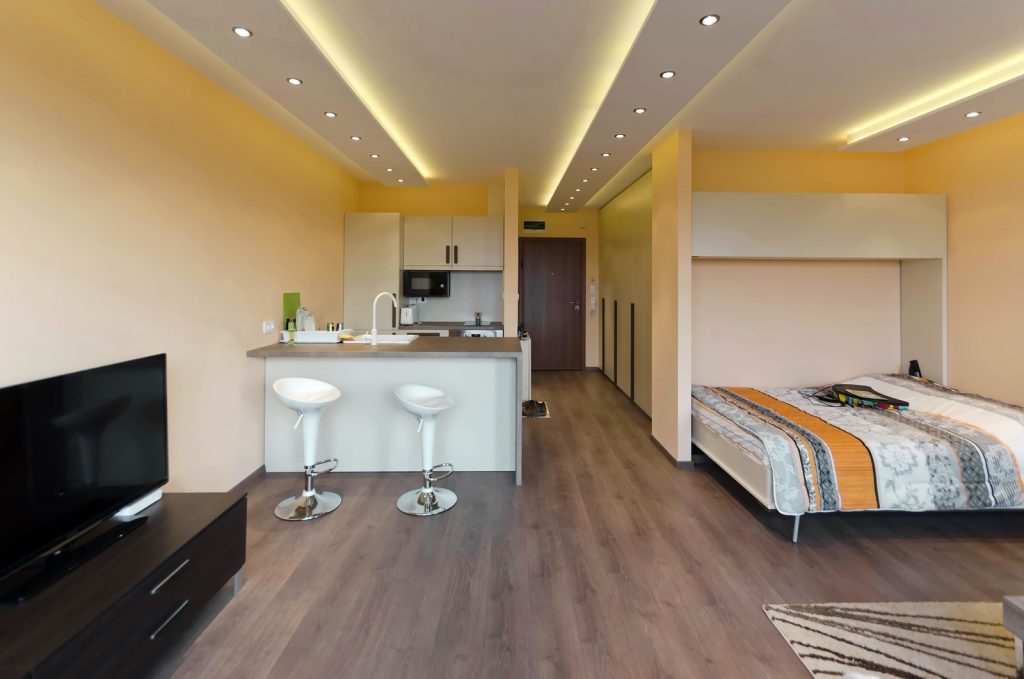You have probably heard other people talk about using LED lights to save energy before, but have you upgraded your house lights to LED?
If you haven’t, is that because you still wonder how exactly LEDs help cut down your electricity bill? If so, here is a complete guideline for LED upgrade, all you need to know before starting to save on energy with LED lights.
What exactly is LED light?
Simply put, LED lights, or Light Emitting Diode lights, are another type of light bulb. What makes LED light different is the lightning materials, in this case, the diode. When electricity hits a diode, it facilitates the movement of electrons inside the bulb and creates light. Because LED lights don’t need heat to cast light, they use much less energy than the traditional incandescent light bulb.
How does upgrading to LED help?
As mentioned above, the reason why LEDs save energy is that nearly 95% of the used energy is turned into light, while with incandescent lights, 95% of its energy is wasted on heating and only 5% turns into light. This means that an LED bulb can create the same amount of light as a traditional light bulb, which consumes 5 to 6 times more power. This means that while having a normal incandescent light on for three hours a day costs more than $17 a year, an LED light with the same amount of using time will only cost about $3.
Here are some more cool facts about LED lights:
- LED lights last at least 15,000 hours – up to 6 times longer than other types of lights. That means a lot less fixing and replacing costs in the long run.
- They are 80% more efficient than other types
- Unlike fluorescent lights, LEDs have no toxic chemicals, which means they will not create any harm to the environment when disposed of.
A guideline to LED upgrade for effective energy saving
So now you know that LED lights are incredibly beneficial to your home, and the environment. If that makes you interested in upgrading your house to LEDs, here’s the guideline of how to do it.
What to look for when buying LED bulbs
There are several types of LED lights, designed for different uses. Typically, LEDs are long-lasting, so they are suitable for places where it is hard to change the bulb regularly such as the ceiling or hallway. A test by ECCA (Energy Efficiency and Conservation Authority) also shows that LEDs endure being turned on and off repeatedly for about 12,000 times. This means that they can be used in places like walk-in wardrobes or toilets, where we go in and out more.
Which type to which room
With different purposes and using time, each room will need different features of light. Here are some basic features to keep in mind when choosing LED lights for your house.
Colour temperature
Each light bulb will have a different colour temperature, ranging from cool to warm, white to yellow. This feature is measured in Kelvins (K), the higher the K the cooler (whiter) the light. Lights with 2700K to 3000K have a warm colour of yellow with a white tint, while 4000K is cool light with the colour of bluish-white.
Old versions of LEDs have quite bright white light, which makes them unsuitable for the cozy atmosphere that most people want to create in the house. Recently, LEDs are upgraded with a warmer white to yellow light to reduce the cold feel and bring a more comfortable ambience to the house.
Beam angle
Another basic feature is beam angle or beam spread which refers to how wide the light spreads on the floor. The beam angle depends on the shape of the bulb and its application.
Narrow-angle lights are suitable for small rooms or areas that need concentrated lighting. Larger-angle lights work well with lighting a whole room with equal and soft light distribution.

Modern living room with modern LED lighting
Bringing it all together
By understanding the features of LED lights, we want to have a great interior lighting system that creates the right moods for the house, matches the decorations, and just simply looks good!
Lounge
This is the common area for a lot of family activities, so you would want lights that are bright enough to watch TV, read books, but also create a homey feeling. Good choices for the lounge are warm-white LEDs with medium to large beam angles. You can also choose dimmable lights to adjust the intensity for different uses.
Hallway and Stairs
The lighting in the hallway and stairs should be more concentrated and ideally, there should be several light bulbs spread out. Having 2 to 3 small-angle LEDs would be best for these areas. The colour temperature can be flexible depending on the decoration and vibes of the house.
Kitchen
The important note for lighting in the kitchen is that it should be shadow-free, so you can see inside the cupboards. Medium to Large angle LEDs is suitable for the kitchen. For extra support, some small bulbs with a small beam angle under the cupboards would make sure that everything is bright and clear for a good cooking experience.
Bathroom
The bathroom’s light should be relaxing, so warm light is the option to go for. It should also shine softly across the room, not on you or the mirror directly. A small note to keep in mind is to look for a steam-proof bulb to avoid breakdowns and ensure the best experience when using.
Conclusion
That is a complete guideline- everything you need to know before upgrading your house to LEDs from Auckland electricians.
With their long-term efficiency, LED lights are definitely worth trying. However, changing the whole lighting in your house can sometimes be tricky (even after you have read this guideline). If your house hasn’t used LEDs before, changing or setting up new fittings is quite complicated. Systematically upgrading the whole house is also not a small project. Therefore, for the best effects, it is a good idea to have a consultation from electricians to get personalised advice for your own house.
Why choose Jenco?
Jenco was founded on the idea customers should always come first – so we do all we can to make sure your experience of hiring an electrician is a positive one.
But what separates us from all the other Auckland electricians you might find on Google?
Aside from high quality workmanship, and completing jobs in a satisfactory matter…



